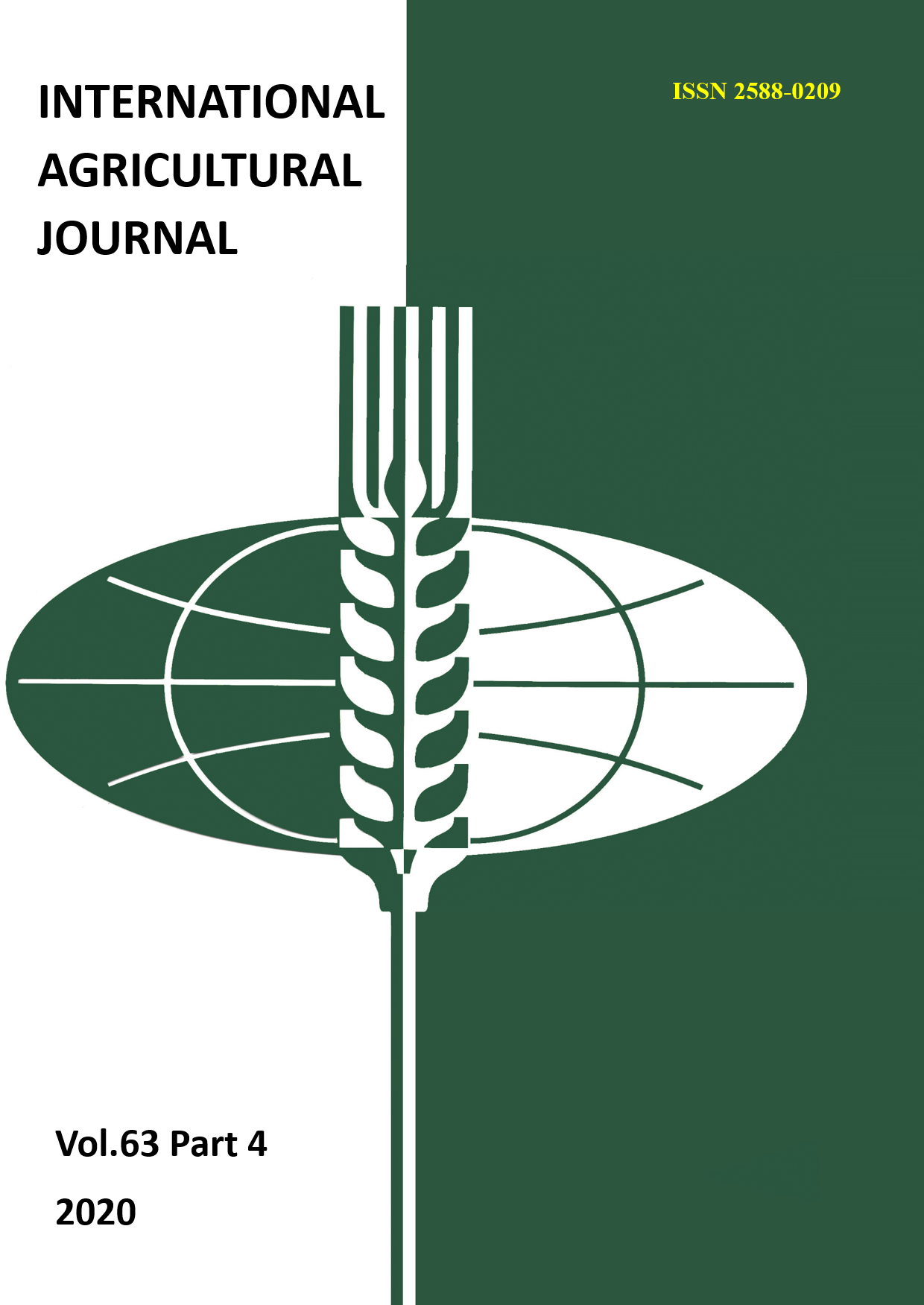MODELING THE FUNCTIONING OF THE RICE IRRIGATION SYSTEM ACCORDING TO THE CURRENT STATE OF PLANTS
Main Article Content
Abstract
Issues of assessing the current situation are of particular relevance. When developing a model for the functioning of a rice irrigation system, one should consider schemes for the influence of individual environmental factors on rice yield, bearing in mind that each phase of plant development has its own optimal values of influencing factors. Forecasts on the current state of plants can be used to establish quantitative relationships between the crop and plant characteristics, agroclimatic, soil, agrotechnical, and other factors. Studies of the land reclamation state require obtaining and accumulating information on vast territories. Therefore, their successful implementation is unthinkable without the use of modern remote tracking methods, including aerospace with their subsequent decryption. The paper proposes a methodology for processing experimental survey data on rice irrigation systems to develop strategies for economic decisions. The technology is based on the use of multispectral data of remote sensing of the Earth and selective diagnostics of the nitrogen content in test areas of rice fields. Moreover, the maximum cost reduction and increased agrochemical analysis is achieved through the use of N-tester.
Article Details
References
2. Safronova T.I., Lutsenko E.V. Issledovanie semanticheskoi informatsionnoi modeli upravleniya kachestvom gruntovykh vod na risovykh orositel'nykh sistemakh // Politematicheskii setevoi ehlektronnyi nauchnyi zhurnal Kubanskogo gosudarstvennogo universiteta. 2004. №7. S. 5-28.
3. Safronova T.I., Lutsenko E.V. Kognitivnaya strukturizatsiya i formalizatsiya zadachi upravleniya kachestvom gruntovykh vod na risovykh orositel'nykh sistemakh // Politematicheskii setevoi ehlektronnyi nauchnyi zhurnal Kubanskogo gosudarstvennogo universiteta. 2004. №7. S.29-43
4. Safronova T.I., Lutsenko E.V. Sintez, optimizatsiya i verifikatsiya semanticheskoi informatsionnoi modeli upravleniya kachestvom gruntovykh vod na risovykh orositel'nykh sistemakh // Politematicheskii setevoi ehlektronnyi nauchnyi zhurnal Kubanskogo gosudarstvennogo universiteta. 2004. №7. S. 44-51.
5. Diekmann M Use and improvement of Ellenbergs indicator values in deciduous forests of the Boreo-nemoral zone in Sweden // Ecography. 1995. № 18. P.178-189
6. Bohling N., Greuter W., Raus T. Indicator values for vascular plants in Southern Aegean (Greece) // Braun-Blanquetia. 2002. Vol. 32. P.1-109.
7. Safronova T.I., Kharlamova O.P., Prikhod'ko I.A. Regulirovanie solevogo rezhima pochv risovykh orositel'nykh sistem // Trudy Kubanskogo gosudarstvennogo agrarnogo universiteta. 2012. № 36. S. 324-329.
8. Kumar, S. Developing soil matric potential based irrigation strategies of direct seeded rice for improving yield and water productivity / S. Kumar, B. Narjary, K. H.S. Kumar, Jat, S.K. Kamra, R.K. Yadav // Agricultural Water Management. 2019. Volume 215, Pages 8-15.
9. Safronova T.I., Prikhod'ko I.A., Kondratenko L.N. Analiz otsenki zemel'nykh resursov v sel'skom khozyaistve // Fundamental'nye issledovaniya. 2019. №5. S.110-114
10. Matsushita B., Yang W., Chen J., Onda Y., Qiu G. Sensitivity of the Enhanced Vegetation Index (EVI) and Normalized Difference Vegetation Index (NDVI) to Topographic Effects: A Case Study in High-density Cypress Forest // Sensors. 2007. Vol. 7. P 2636-2651.

